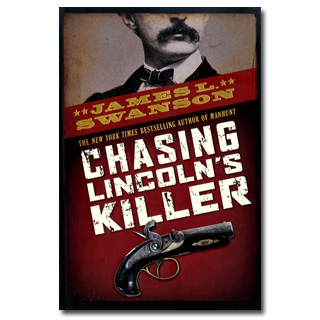
A FEW OTHER EVENTS FOR
APRIL 13:
- Happy birthday Lee Bennett Hopkins (Amazing Faces) and Rita Williams-Garcia (One Crazy Summer).
- It’s the birth date of Genevieve Foster (1893-1979), George Washington’s World; Marguerite Henry (1902-1997), Misty of Chincoteague, Justin Morgan Had a Horse; Eudora Welty (1909-2001), The Shoe Bird; Erik Haugaard (1923-2009), The Samurai’s Tale; and Jon Stone (1931-1977) The Monster at the End of This Book.
- Thomas Jefferson (1743-1826), known as the principal author of the Declaration of Independence and the third president of the fledgling the young United States, was also born on this day. Then in 1943, the 200th anniversary of his birthday, the Jefferson Memorial was dedicated in Washington, D.C. You will not be surprised to learn it is Thomas Jefferson Day. Read Thomas Jefferson by Cheryl Harness.
On April 13, 1865, the city of Washington, D.C., celebrated the end of the Civil War by illuminating the city. Both public and private building glowed from candlelight, torches, gaslight—even fireworks. Many thought it the most beautiful night ever experienced in the nation’s capital. But April 14 would be one of worst days in the history of the country.
Every now and then, an author of a book for adults adapts that work into an important book for young readers, just as John Fitzgerald Kennedy did for Profiles in Courage. James L. Swanson revised his bestselling novel Manhunt: The 12-Day Chase for Lincoln’s Killer to create Chasing Lincoln’s Killer, a book that reads like a thriller and works perfectly for ten- to sixteen-year-olds.
In a page-turning, exciting narrative he brings readers to the events of 1865 that preceded the assassination of Abraham Lincoln. Readers watch John Wilkes Booth, hour by hour, plot the assassination of Lincoln, the attack on the secretary of state, and the attempted murder of the vice president, Andrew Johnson. They meet his partners in crime—Mary Surratt, David Herold, Lewis Powell, George Atzerodt. And then they watch in detail as Booth pulls off his own part of the master plan before the rest of the events start to go awry—including the attack on the secretary of state. Booth and his co¬conspirators then escape from Washington and those pursuing them. A twelve-day manhunt ensues, which finally ends in Booth’s death and the capture of his team.
Even though the outcome is known, readers breathlessly follow the events, watching how ideology played itself out in the days following the surrender of Lee to Grant. Not everyone who helped Booth believed in the Lost Cause of the South; many struggled with the possible danger to themselves and to their families. Some helped gladly, knowing the consequences. Swanson allows readers to understand why the events happened, but spends almost all of his text on exact details of how events transpired in the days after the assassination. His scenes are so well written that readers feel they are actually traveling along with Booth, desperately trying to get deep into the South for safety. After reading the book, I put on my “must do” list the twelve-hour bus tour organized by the Surratt House Museum that follows Booth’s escape route.
For those hunting for material for the 150th anniversary of the Civil War or a book that can engage young people in history, Chasing Lincoln’s Killer provides action, true crime, and suspense. I remember as a young reader gobbling up Jim Bishop’s The Day Lincoln Was Shot. Many will have the same reaction to this book. In Chasing Lincoln’s Killer, Swanson shows why history, told as a story, makes the most compelling reading of all.
Here’s a passage from Chasing Lincoln’s Killer:
From the shadows, Powell and Herold watched Seward’s doctors leave. The house was quiet now. They watched the gaslights go dim in several rooms, indicating that the occupants were settling in for the night. Powell handed his horse to Herold and walked across the street to the secretary’s front door. He rang the bell. Herold scanned up and down the block as he stood watch, keeping their horses ready.
On the first floor of the house, a black servant named William Bell hurried to answer the door. Late-night callers, mostly messengers, were not unusual. There was no reason why the servant should not open that door.
Originally posted April 13, 2011. Updated for 2024.













My eight-grade son wrote a paper yesterday about the Lincoln Memorial. I think we’d both enjoy this book. I have to tell you, Anita, I eagerly look forward to checking your blog every morning to see what books you’re recommending.
I haven’t read this one yet, but as a budding enthusiast of YA narrative nonfiction, I will definitely be adding this to the list. Thanks for including nonfiction on here!
another book to keep my eye out for. I know so little about U.S. history, but am getting more interested in it these days.
and I was just having a conversation with a friend about “first book we remember from when we started to read” and hers was “the monster at the end of the book.” (I see it is the author’s birthday today.)
I am right there with you, why read dry history texts that will be forgotten, when there are powerful and engaging texts to deliver history in a way that entertains, informs, and lasts?! Some of my recent favorites that do just that: Nathan Hale’s Hazardous Tales, Bomb (0f course) and Lincoln’s Grave Robbers. Your highlighted book today is such an amazing text, I loved the pictures and overall feel of the book, in addition to how gripping it was.
Nicole: Thanks for the other suggestions. For me, Bomb sets the standards for this type of narrative nonfiction.